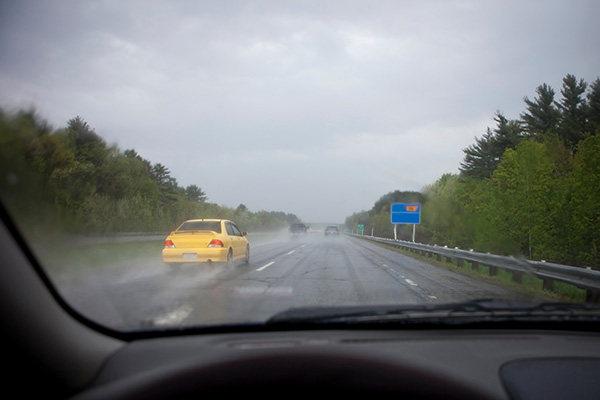
When the weather turns sour—whether it’s rain, snow, or fog—the way you drive should change with it. But for many people, it doesn’t. That’s where problems start. Bad weather doesn’t cause accidents—bad decisions do. And unfortunately, the most dangerous mistakes people make in these conditions are often the ones they don’t realize they’re making.
If you’ve ever felt your tires lose grip in a storm or struggled to see clearly in heavy snow, you already know how fast things can go wrong. Let’s break down the most common (and risky) driving behaviors that become even more dangerous when the weather takes a turn.
Driving Too Fast for Conditions
Even if you're within the posted speed limit, you're not always driving safely. Speed limits are set for ideal weather, not icy roads or downpours. The faster you go, the less time you have to react—and the more likely your car will lose traction.
In rain, snow, or fog, slowing down can be the difference between staying on the road and sliding off it. But too often, drivers don’t adjust their speed until it’s too late. That one extra minute saved isn’t worth the risk of a collision.
Following Too Closely
Tailgating is dangerous enough on dry roads—but in bad weather, it’s a recipe for disaster. When roads are slick, your stopping distance increases significantly. If the driver ahead of you brakes suddenly, there's a good chance you won't have time to react.
A good rule of thumb? In poor weather, double your normal following distance. It gives you more time to slow down, maneuver, or stop without losing control.
Overconfidence in All-Wheel Drive
Driving an SUV or a vehicle with all-wheel drive might give you better traction when accelerating—but it doesn’t help you stop faster or take turns more safely. Too many drivers make the mistake of assuming AWD means they're immune to road conditions.
However, AWD can actually give a false sense of security, leading to faster speeds and riskier moves. The laws of physics still apply—no matter what kind of drivetrain you have.
Not Using Headlights When Visibility Drops
Bad visibility isn’t just a problem for you—it’s a problem for everyone else trying to see your vehicle. Whether it’s heavy rain, snow, or fog, driving without headlights makes you practically invisible to other drivers.
And no, daytime running lights aren’t enough. In bad weather, turn on your full headlights and taillights—not only to see but to be seen. In many states, it’s also the law.
Slamming the Brakes When Skidding
It’s instinct to hit the brakes hard when your car starts to slide—but that can make things worse, especially on ice or wet pavement. Slamming the brakes locks up the wheels, reducing your ability to steer and increasing your chances of spinning out.
Instead, if you start to skid, ease off the accelerator and steer gently in the direction you want the car to go. And if your car has anti-lock brakes, apply steady pressure to the brake pedal—don’t pump them.
From tires to headlights, Community Auto has you covered for safe driving in any weather. Visit us in Ft. Collins, CO, for reliable maintenance and repairs.